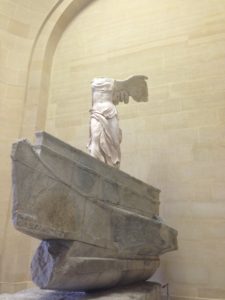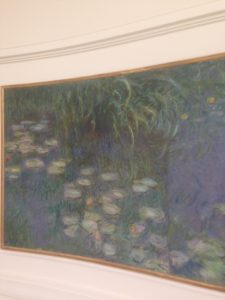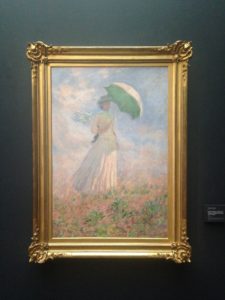Paris and the Art of Museums
Paris museums are in a class all their own. No other city possesses such a bevy of institutions of culture and tourism, especially when it comes to art. In my recent visit to the City of Light, I discovered that there is an art to a great museum. Each great art gallery in Paris embodies a different artistic tendency of the city, which makes their contrasts all the more interesting to explore. The alpha and omega of Paris’ museums, the Louvre towers over the rest, dwarfing them in size and in prestige. But, much like Paris itself, the Louvre is overcrowded, loaded to the brim with history and ostentatious displays of wealth, and intimidating to a novice visitor. As I walked down the great galleries, I saw masterpieces crammed next to each other on the walls, fighting to be admired for a single second when they might have been the centerpieces of any other museum’s collection. For me, exhausted from a day of sightseeing, I could not find a single route to take or a good way to approach the thousands of priceless works all around me. Yet despite all this, treasures like the Mona Lisa and the Winged Victory of Samothrace stand out above the crowd, if you can sneak around the tour groups vying for pictures. The Louvre is Paris at its most excessive, fantastic if you can grasp its greatness despite its size and disorganization.
Just down the Tuileries Garden, the Orangerie Museum is perhaps the exact opposite of the Louvre. Its main hall contains but two large oval rooms displaying eight canvases total on the same subject from the same artist: Monet’s water lilies. Originally designed by Monet to display his water lilies, the Orangerie was recently renovated and displays these treasures as they were intended, in a space dedicated to peace and contemplation. Downstairs, a small collection of expressionists and modernists like Derain, Van Gogh, and Picasso is available, which makes for nice viewing. The Orangerie shows Paris at its artistic aspirations: elegant and minimalist, with sublime display of beauty that captures a moment in time. Surprisingly, I waited the longest to get into the Orangerie, showing that the beautiful Paris (and Monet) draws in the crowds.
Finally, the Musée d’Orsay embodies Paris’ approach to art. It reveals how Paris strives to make its best features attractive to all while preserving their historic aspects. Inside the former rail station, the museum itself is a work of art that lays out the story of 19th century art from Neoclassicism to Impressionism, for which the Orsay is famous. The collection, although small, contains a huge number of highly important and beautiful works, interspaced with sculptures from Rodin, among others. I found the Orsay the most fantastic of all the Paris museums for its ability to show French art’s road to Impressionism. Its well laid-out collection of painters from Manet, to Sisley, Cezanne, Renoir, and Monet was also simply stunning. I was astounded by the amount of beauty hanging on the walls of a few small rooms around me. The Orsay shows how Paris has made an effort to convert its past to make its art most accessible.
In my travels I have visited a great deal many museums, and there is no right way for every museum to display its treasures. However, in Paris I noticed that the layout itself is an artistic expression, a choice about how the story of the museum will present itself to visitors. The Louvre, the Orangerie, and the Musée d’Orsay all exhibit different facets of Parisian artistic tastes and expressions, each with their own positives and negatives. I have my favorite, but in Paris, there is enough art for all to find their masterpieces.



